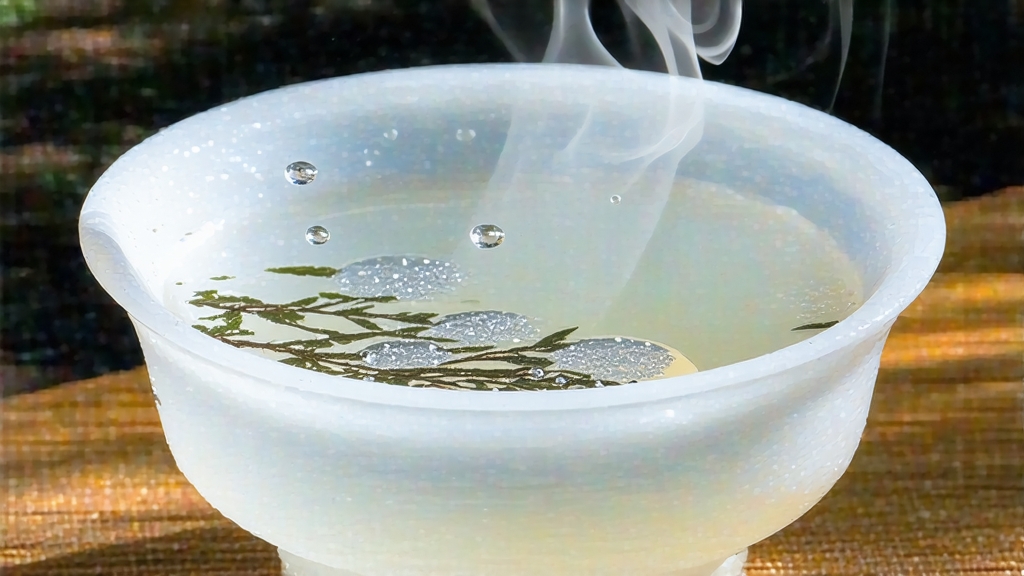
When Chinese tea lovers speak of “white tea,” they are not referring to a pale infusion alone, but to an entire philosophy of restraint. Among the six canonical classes of China’s tea, white is the least interventionist: no pan-firing, no rolling, no charcoal roasting. Leaves are simply allowed to wither and dry, as if the maker’s highest skill were knowing when to do nothing. Within this minimalist family, Bai Hao Yin Zhen—Silver Needle, or literally “White Down Silver Needle”—sits at the apex. Composed only of unopened buds plucked for a few fleeting mornings each spring, it is the quietest, most luminous expression of both Camellia sinensis and the human hand that guides it.
A bud, not a leaf, is the first surprise for newcomers. Covered in a down so fine it resembles fresh snow, each needle is a capsule of springtime chemistry: enzymes still dormant, amino acids at peak, caffeine lightly concentrated, and a store of aromatic precursors that will later unfold into honey, cucumber skin, and the scent of late-night melon. Because the bud is the plant’s most tender tissue, every step that follows plucking must answer to delicacy. The traditional proverb among Fuding makers is “the bud should still be dreaming when it meets the sun.”
History: from imperial tribute to global curiosity
The first written record of “white tea” appears in the Song dynasty treatise Da Guan Cha Lun (1107 CE), yet the text refers to a compressed cake of broad leaves, not the loose needles we know today. The bud-only style emerged during the late Ming, when loose-leaf infusion replaced whisked powders and court taste shifted from green to subtler aromatics. By 1796 the Qianlong Emperor’s household accounts list “Bai Hao” among tribute teas sent from northern Fujian, transported in small bamboo baskets lined with mulberry paper and sealed with rice paste. Coastal merchants soon carried it to Southeast Asia where Hokkien traders discovered that the downy buds withstood long voyages better than green teas, arriving still fragrant in the torrid holds of junks bound for Singapore and Batavia. In 1891 a Fuding sample won a prize at the Bombay Exhibition; Westerners, struck by the pale color and the needle shape, christened it “Silver Tip Pekoe,” a name that still circulates in older English catalogues. Only in the last two decades has Yin Zhen become a boutique staple from Berlin to Brooklyn, riding the wave of low-oxidation, high-antioxidant fascination.
Terroir: why Fuding tastes like morning mist
Authentic Silver Needle comes from three interlocking counties in northeastern Fujian—Fuding, Zhenghe, and Jianyang—where granitic soils drain quickly and the East China Sea sends nightly fogs sliding up river valleys. These fogs act as a natural shade cloth, lengthening the bud’s growth cycle and thickening its protective down. Day-night temperature differentials of 10 °C or more slow respiration, allowing sugars and glutamic acid to accumulate. The result is a tea that tastes less of leaf and more of altitude and humidity: crisp cucumber water, white peach skin, and a faint marine note that Chinese tasters liken to steamed razor clam. Above 500 m elevation, the cultivar Fuding Da Bai (“Big White”) develops especially fat buds—1.5 to 3 cm—whose density of trichomes gives the highest grade its metallic silver sheen. Lower elevations produce thinner, greener needles that steep faster but lack the sustained sweetness that connoisseurs call huigan, the returning fragrance that arrives at the back of the throat minutes after swallowing.
Plucking calendar: the ticking clock
The harvest window opens when the air temperature stabilizes between 15 °C and 20 °C, usually from mid-March to early April. Buds must be taken before the first scale leaf unfurls—one day too late and the tip bends into a tiny hook, disqualifying it from top grade. Experienced pickers use a twisting motion rather than a snap, avoiding the fingernail’s oxidizing bruise. A skilled woman can gather 800 g of fresh buds in a dawn shift; after withering and drying, that shrinks to under 200 g, explaining why imperial-grade Yin Zhen routinely outsells silver bullion by weight. Rainy days are avoided, yet paradoxically the best